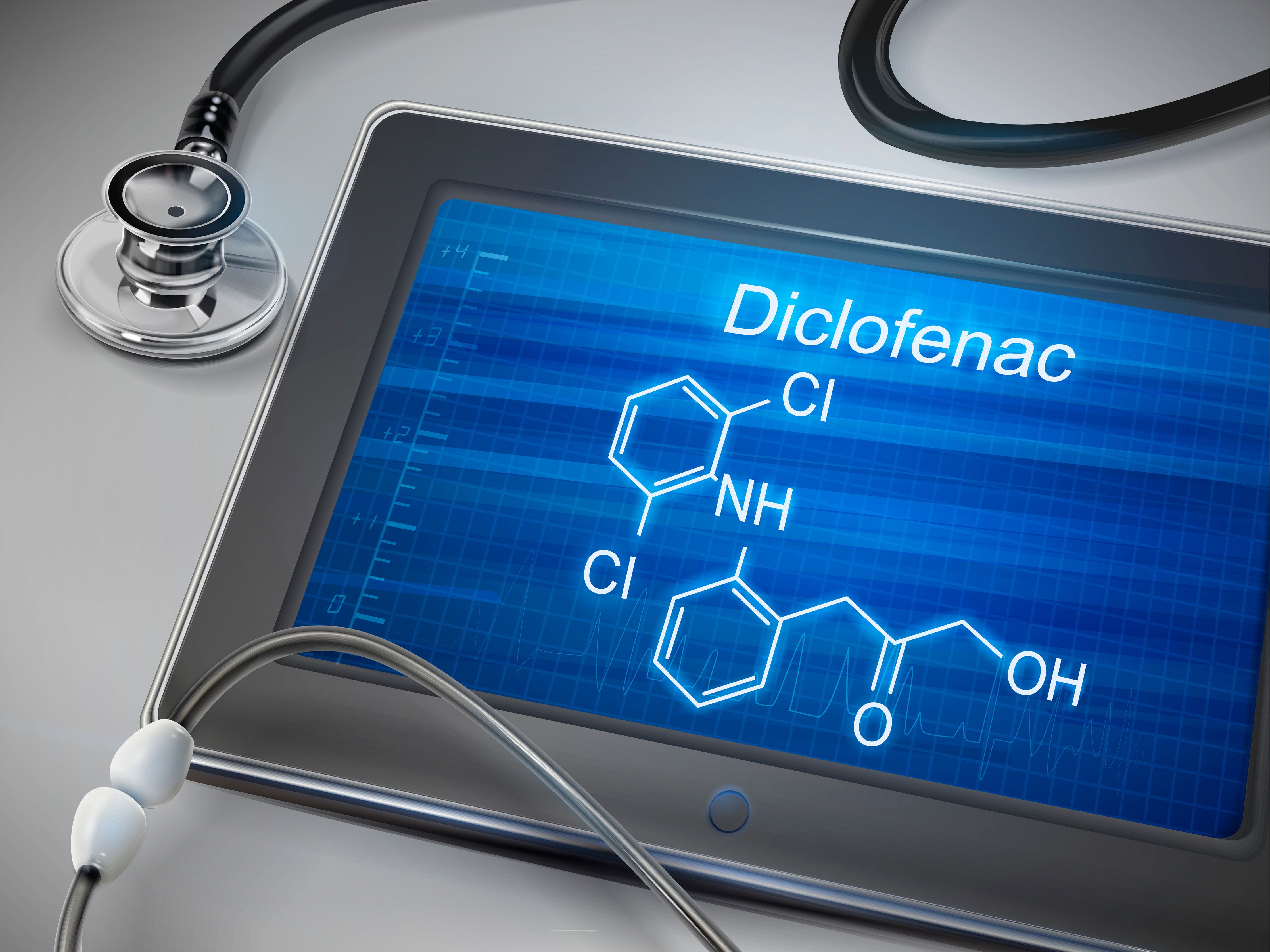Near-Infrared Spectroscopy Predicts Drug Loading and Release Rate of Coating of Diclofenac Sodium Spheres
The method of analysis described by these researchers had the advantages of being in-line and in real time, compared to more traditional approaches such as high performance liquid chromatography (HPLC).
The rising popularity of diclofenac sodium spheres as a drug delivery system is the subject of a new study in Spectrochimica Acta Part A: Molecular and Biomolecular Spectroscopy that examines the drug loading of diclofenac sodium and release rate during the coating process (1). Not only were drug loading and release rate monitored, but both were given real-time, in-line predictions with the use of near-infrared (NIR) spectroscopy.
diclofenac word display on tablet | Image Credit: © JoyImage - stock.adobe.com

The 13-author study was a collaboration between researchers affiliated with Shandong University and Shandong SMA Pharmatech Co., both in Shandong, China. They began their report by explaining how process analytical technology (PAT) has been increasingly incorporated into manufacturing best practices in the pharmaceutical industry in recent years, with PAT being described as an indispensable and powerful tool for the in-line and real-time control and monitoring of drug production, whether with NIR, Raman spectroscopy, or optical coherence tomography (OCT) (1).
Diclofenac sodium enteric-coated tablets are commonly prescribed in the United States under the brand name Voltaren, which is also offered in gel form (2,3). It is a nonsteroidal anti-inflammatory drug (NSAID) that is used for arthritis relief, providing anti-inflammatory, analgesic, and antipyretic effects according to the U.S. Food and Drug Administration (FDA). The research team in Shandong, meanwhile, reported that diclofenac sodium spheres, as a multi-unit, film-coated drug delivery system, offer good fluidity and a stable release rate, with fluidized bed coating widely used in industrial production (1).
Fluidized bed coating involves the spraying of a functional polymer with coating dispersion, generally leaving a uniform film coating. It has the advantages of fast heat and mass transfer, a large contact area between gas and solid phases, and a small temperature gradient (1). As part of this process, the researchers said, testing and analysis of the drug loading and release rate—the critical quality attributes (CQAs) of diclofenac sodium—ensures the delivery system’s safety and efficacy, but off-line methods are time-consuming in such a way that delays analysis unnecessarily.
In this application, a real-time in-line prediction model using NIR spectroscopy allowed for strong anti-interference, in turn permitting sucrose spheres to be introduced into the experiment in varying feeding amounts (1). The researchers said such a design would prove the robustness of the model.
Near-infrared spectroscopy is used where multicomponent molecular vibrational analysis is required in the presence of interfering substances. The near-infrared spectra consist of overtones and combination bands of the fundamental molecular absorptions found in the mid-infrared region. Near-infrared spectra consist of generally overlapping vibrational bands that are non-specific and poorly resolved. The use of chemometric mathematical data processing can be used to calibrate for qualitative of quantitative analysis despite these apparent spectroscopic limitations.
A micro NIR spectrometer with a diffuse reflection module and high-temperature external probe was used in concert with the procedure of fluidized bed coating. Results of this experiment were said to be successful, with the team finding it was able to verify the analytical ability of the model. Because of this, the authors suggested further study would be done in this area, to give more scientific backing to intelligent and modern drug manufacturing processes.
Reference
(1) Sun, Z.; Zhang, K.; Lin, B.; et al. Real-Time In-Line Prediction of Drug Loading and Release Rate in the Coating Process of Diclofenac Sodium Spheres Based on Near Infrared Spectroscopy. Spectrochim. Acta, Part A 2023, 301, 122952. DOI: 10.1016/j.saa.2023.122952
(2) Voltaren® (diclofenac sodium enteric-coated tablets) – Tablets of 75 mg – Rx only – Prescribing Information. U.S. Food and Drug Administration. https://www.accessdata.fda.gov/drugsatfda_docs/label/2009/019201s038lbl.pdf (accessed 2023-09-07).
(3) Voltaren Arthritis Pain Relief Gel & Dietary Supplements | Voltaren. https://www.voltarengel.com/ (accessed 2023-09-07).
Exoplanet Discovery Using Spectroscopy
March 26th 2025Recent advancements in exoplanet detection, including high-resolution spectroscopy, adaptive optics, and artificial intelligence (AI)-driven data analysis, are significantly improving our ability to identify and study distant planets. These developments mark a turning point in the search for habitable worlds beyond our solar system.
Using Spectroscopy to Reveal the Secrets of Space
March 25th 2025Scientists are using advanced spectroscopic techniques to probe the universe, uncovering vital insights about celestial objects. A new study by Diriba Gonfa Tolasa of Assosa University, Ethiopia, highlights how atomic and molecular physics contribute to astrophysical discoveries, shaping our understanding of stars, galaxies, and even the possibility of extraterrestrial life.
New Telescope Technique Expands Exoplanet Atmosphere Spectroscopic Studies
March 24th 2025Astronomers have made a significant leap in the study of exoplanet atmospheres with a new ground-based spectroscopic technique that rivals space-based observations in precision. Using the Exoplanet Transmission Spectroscopy Imager (ETSI) at McDonald Observatory in Texas, researchers have analyzed 21 exoplanet atmospheres, demonstrating that ground-based telescopes can now provide cost-effective reconnaissance for future high-precision studies with facilities like the James Webb Space Telescope (JWST) (1-3).